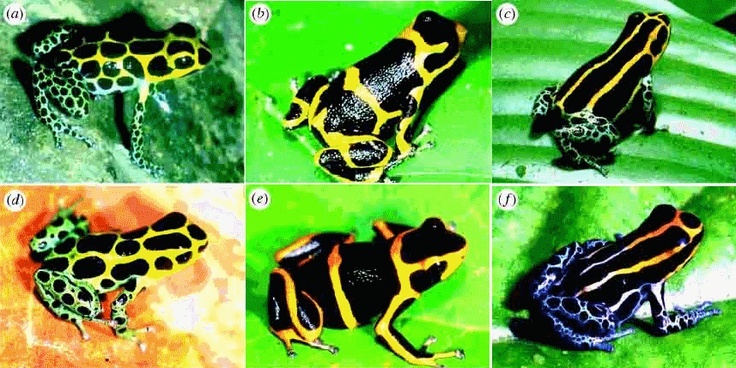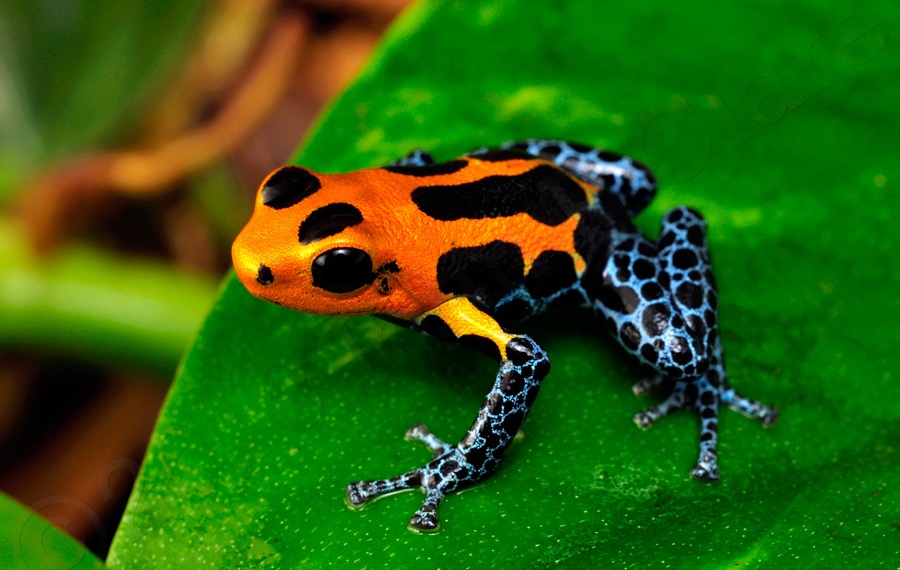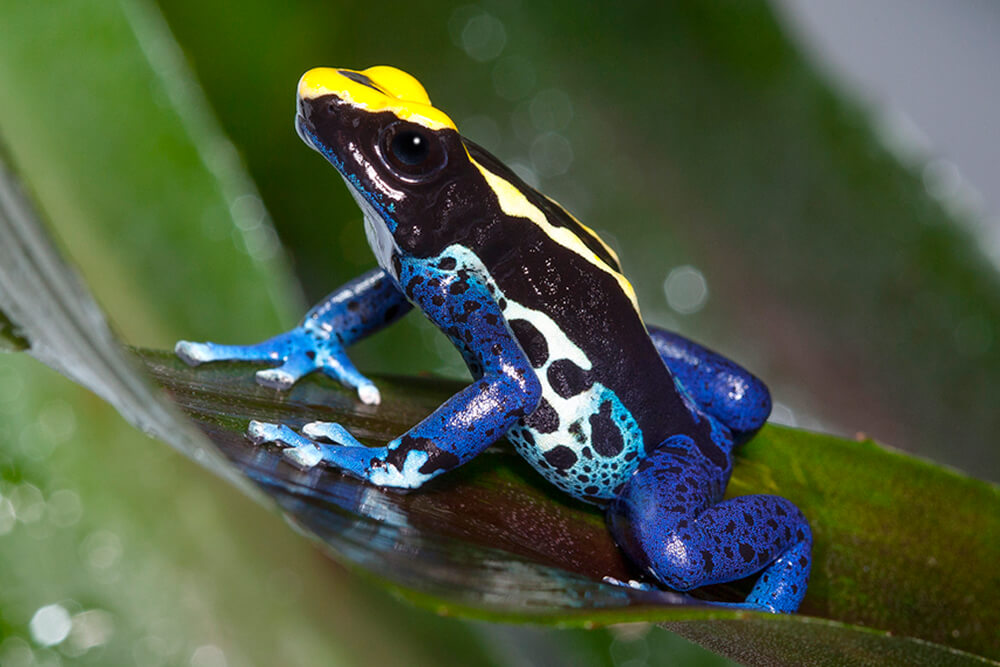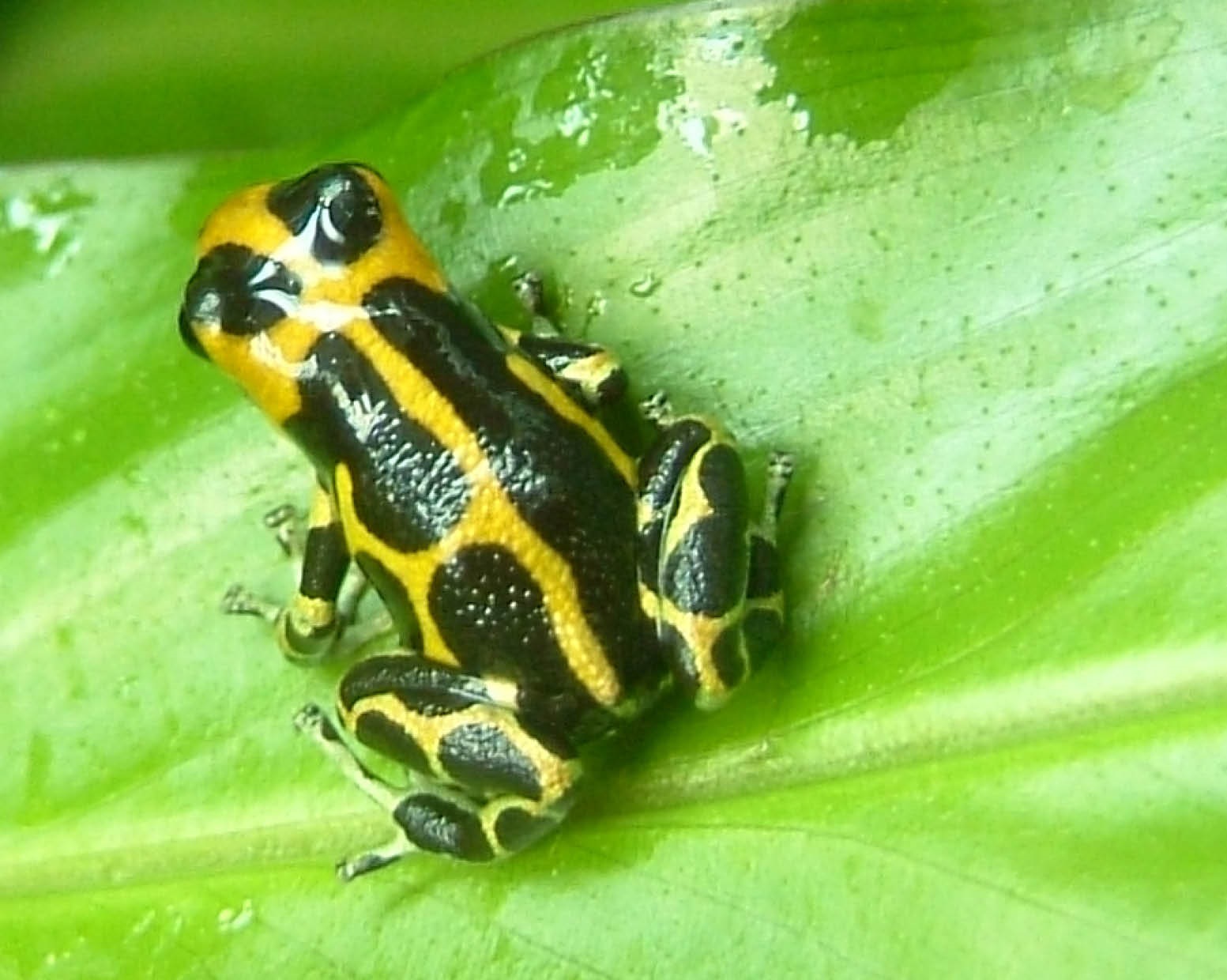The Mimic Poison Frog, scientifically known as Ranitomeya imitator, is a fascinating species of poison dart frog found in the north-central region of eastern Peru. These small amphibians are known for their bright colors and unique ability to mimic other toxic frog species, making them an intriguing subject for study and appreciation.

Overview of the Mimic Poison Frog
Ranitomeya imitator belongs to the family Dendrobatidae and is classified under the genus Ranitomeya. These frogs are endemic to the rainforests of Peru, where they can be found at elevations ranging from 200 to 1200 meters above sea level.
Physical Characteristics
The Mimic Poison Frog is a small species, typically measuring less than 1.5 centimeters in length. However, some individuals can grow up to 6.5 centimeters long. These frogs are known for their striking colors and patterns, which vary depending on the population and the species they mimic.
There are four distinct color morphs of the Mimic Poison Frog, each mimicking a different toxic species found in the same geographic area. These morphs include the varadero (mimicking R. fantastica), striped (mimicking lowland R. variabilis), spotted (mimicking highland R. variabilis), and banded (mimicking R. summersi).

Behavioral Traits
Mimic Poison Frogs are diurnal, meaning they are active during the day. They can often be seen hopping around the forest floor in search of prey, which consists primarily of ants, termites, and other small invertebrates.
These frogs are known to be territorial, with males defending their ranges and attacking other males that enter their territory. They are also known to form closely overlapping ranges with their mated pairs.
Personality and Social Dynamics
Mimic Poison Frogs engage in elaborate courtship rituals to attract females. Males perform a courtship dance, and more than one female may respond to a single male’s call. The females then fight aggressively until one emerges victorious.
Once mated, the female lays her eggs on the forest floor, and the male guards them and keeps them moist. After hatching, the male carries the tadpoles on his back to a water source, where they develop into froglets.

Adaptations and Survival Strategies
Like most other Ranitomeya species, the Mimic Poison Frog produces a mild toxin called pumiliotoxin B. However, their small size limits the amount of poison they can secrete. These frogs likely gain their toxins from consuming toxic insects or other invertebrates in the wild.
The bright colors of the Mimic Poison Frog serve as a warning to potential predators about their toxicity, a phenomenon known as aposematism. Additionally, their ability to mimic other toxic species provides an extra layer of protection against predators.
Conservation Status and Efforts
The Mimic Poison Frog faces threats such as habitat loss and degradation. While their current conservation status is not well-defined, many poison dart frog species are listed as threatened on the IUCN Red List.
Conservation efforts for the Mimic Poison Frog and other poison dart frogs involve protecting their natural habitats and raising awareness about the importance of these species in their ecosystems. Scientists also continue to study these frogs to better understand their behavior, physiology, and adaptations.

Fascinating Facts
- The Mimic Poison Frog was discovered in the late 1980s by Rainer Schulte, who later split the species into more subspecies based on color morphs and behavioral patterns.
- These frogs do not produce toxins in captivity, suggesting that they likely obtain their toxins from consuming toxic insects or other invertebrates in the wild.
- The presence or absence of poison dart frogs in a particular ecosystem can provide valuable information to scientists about habitat quality and biodiversity.
Conclusion
The Mimic Poison Frog is a remarkable species that showcases the incredible adaptations and survival strategies found in nature. By understanding its characteristics, behavior, and personality, we can appreciate the complexity and importance of these frogs in their ecosystem. Conservation efforts are crucial to ensure the survival of the Mimic Poison Frog and other poison dart frog species for generations to come.

